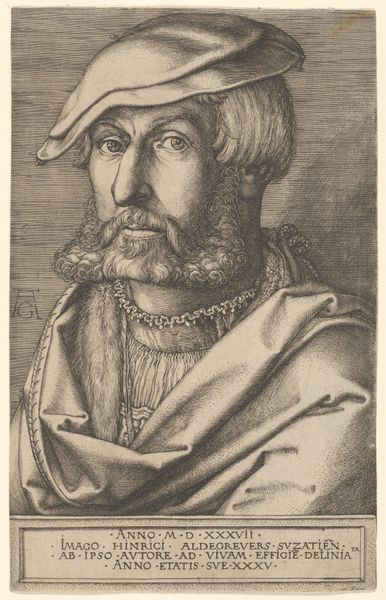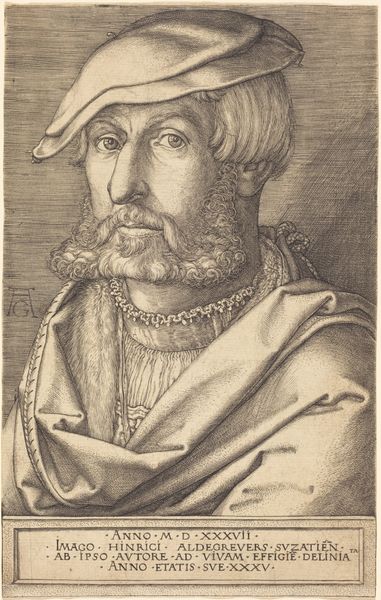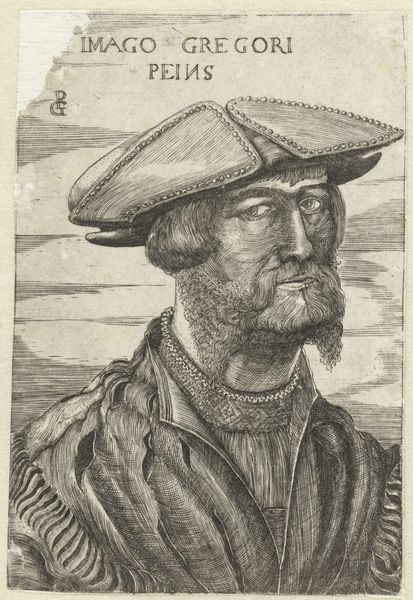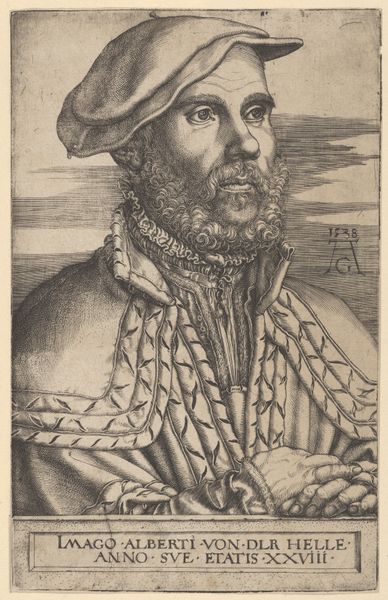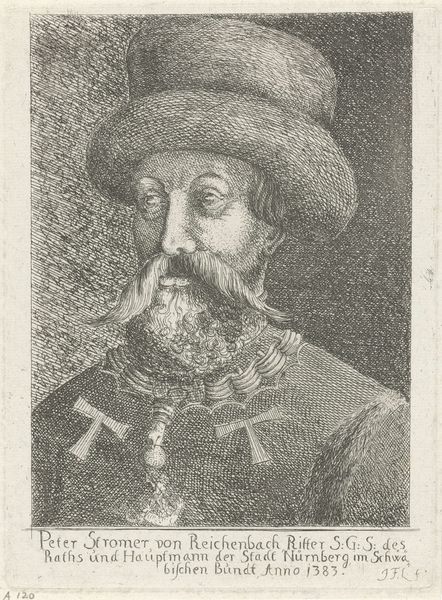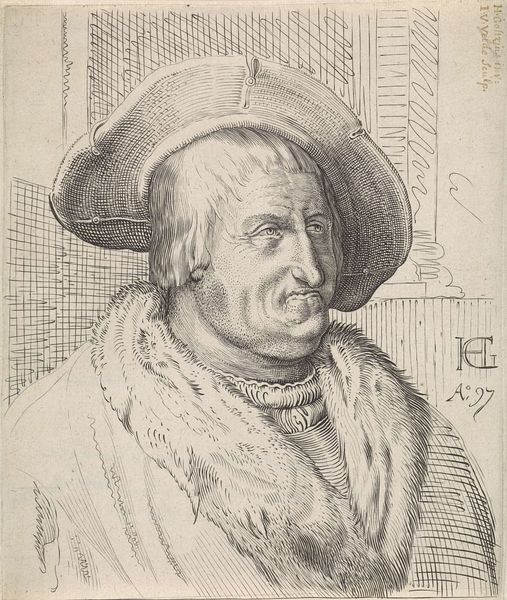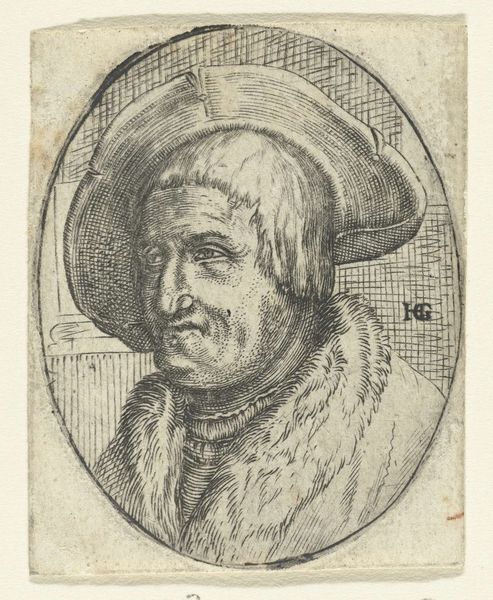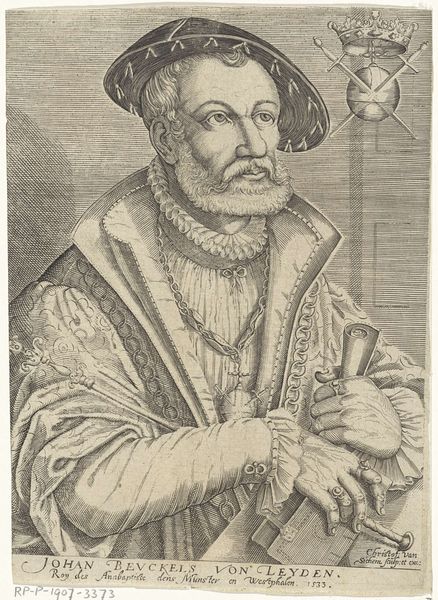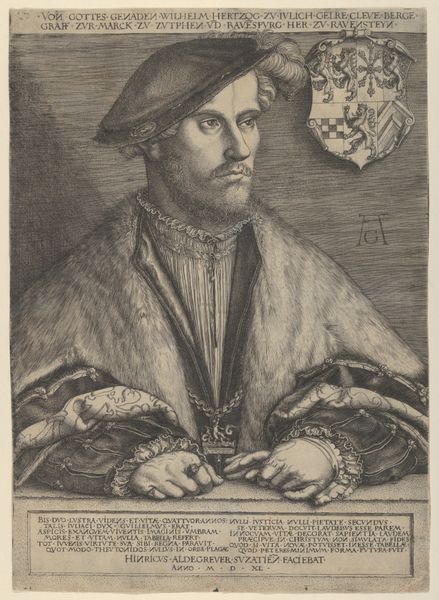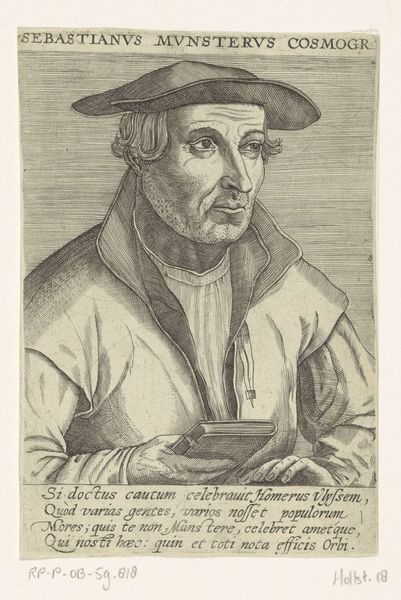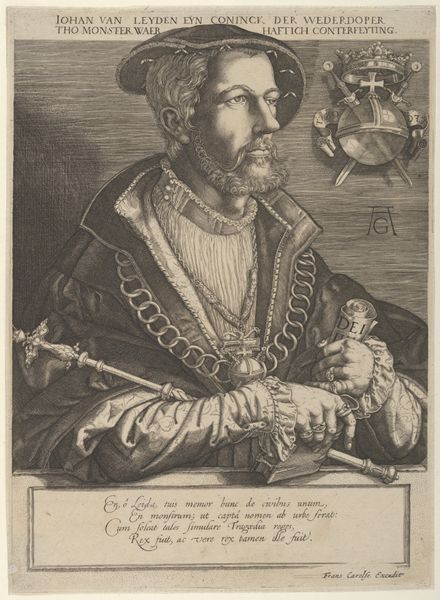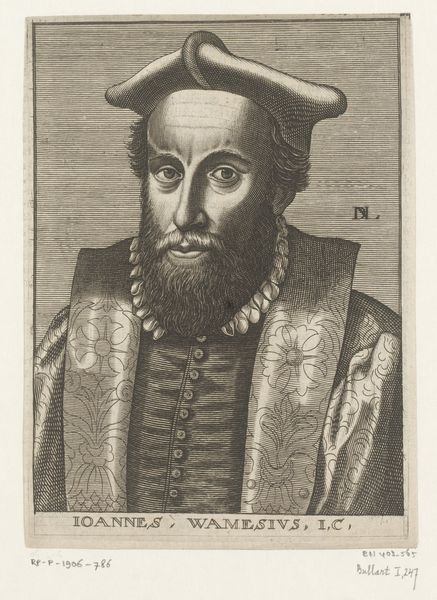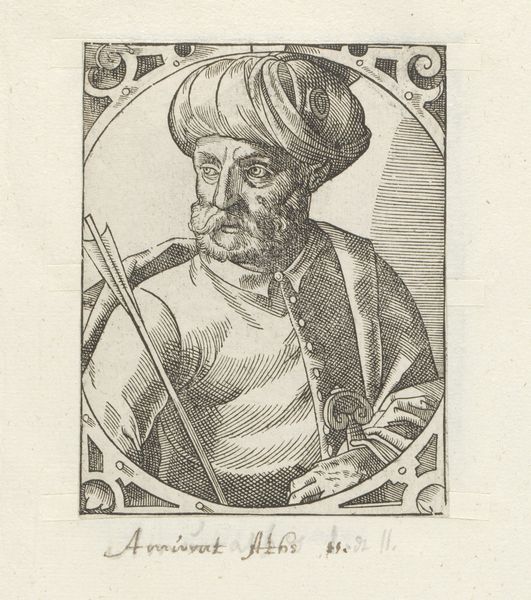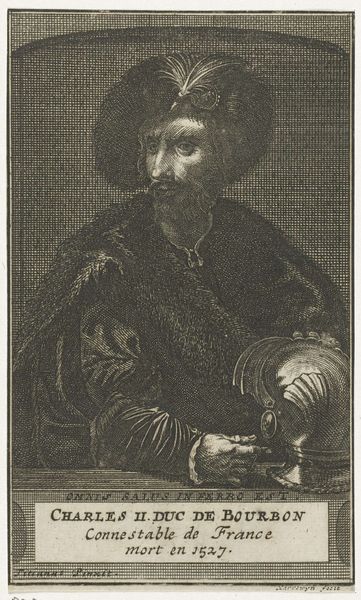
print, engraving
#
portrait
# print
#
old engraving style
#
caricature
#
mannerism
#
figuration
#
form
#
portrait reference
#
geometric
#
line
#
portrait drawing
#
history-painting
#
engraving
#
realism
Dimensions: height 178 mm, width 125 mm
Copyright: Rijks Museum: Open Domain
Editor: We’re looking at "Portret van Heinrich Aldegrever," a print from around 1537 to 1610, housed here at the Rijksmuseum, by an anonymous artist. The texture seems really interesting—all these fine lines creating depth. What do you see in this piece? Curator: Primarily, I am drawn to the use of line. Consider how the artist modulates line weight and density to achieve chiaroscuro effects, simulating light and shadow on the subject's face and garments. Note, too, how the artist establishes a dialogue between geometric shapes and organic forms to produce an intriguing composition. The angular planes of the face contrast with the curvilinear folds of the cloak. Editor: So you are focusing on the visual elements first? Is there any connection to portraiture conventions of the time, perhaps challenging or adhering to them? Curator: Indeed. Conventions may be pertinent, but a rigorous formal analysis reveals how the artwork constructs its own internal system of meaning. Consider the placement of the subject within the pictorial frame and how this generates a sense of presence. Ask yourself, does this pose reflect conventional representation, or does it signal a departure, offering alternative ways of engaging with the subject? Editor: That’s a different approach than I would have considered. Thinking about the lines as forms themselves adds a lot. Curator: Precisely. Through careful observation of the artist's techniques, we gain a greater appreciation for the creative process that underlies this print. Editor: Thank you. Now I'm thinking about prints not as just copies but also as works of artistic achievement.
Comments
No comments
Be the first to comment and join the conversation on the ultimate creative platform.
